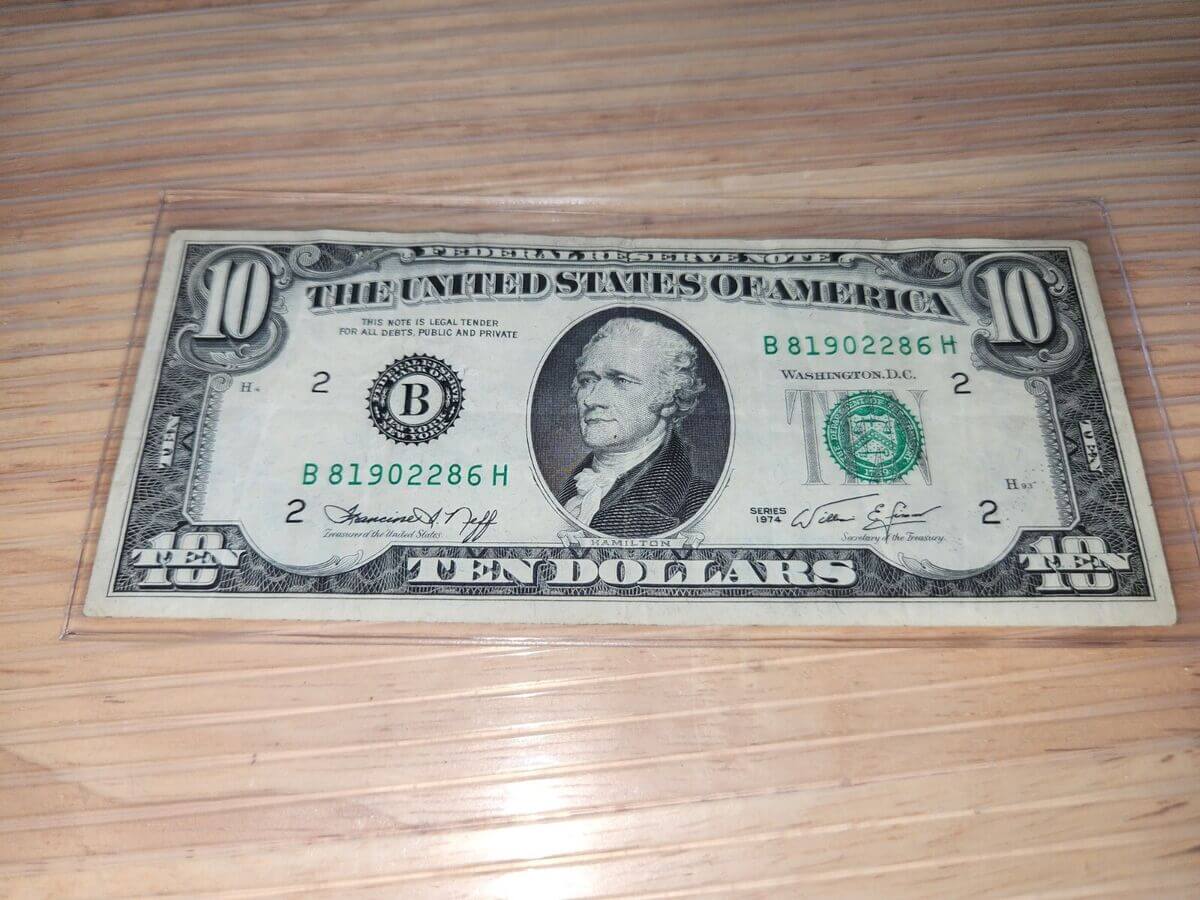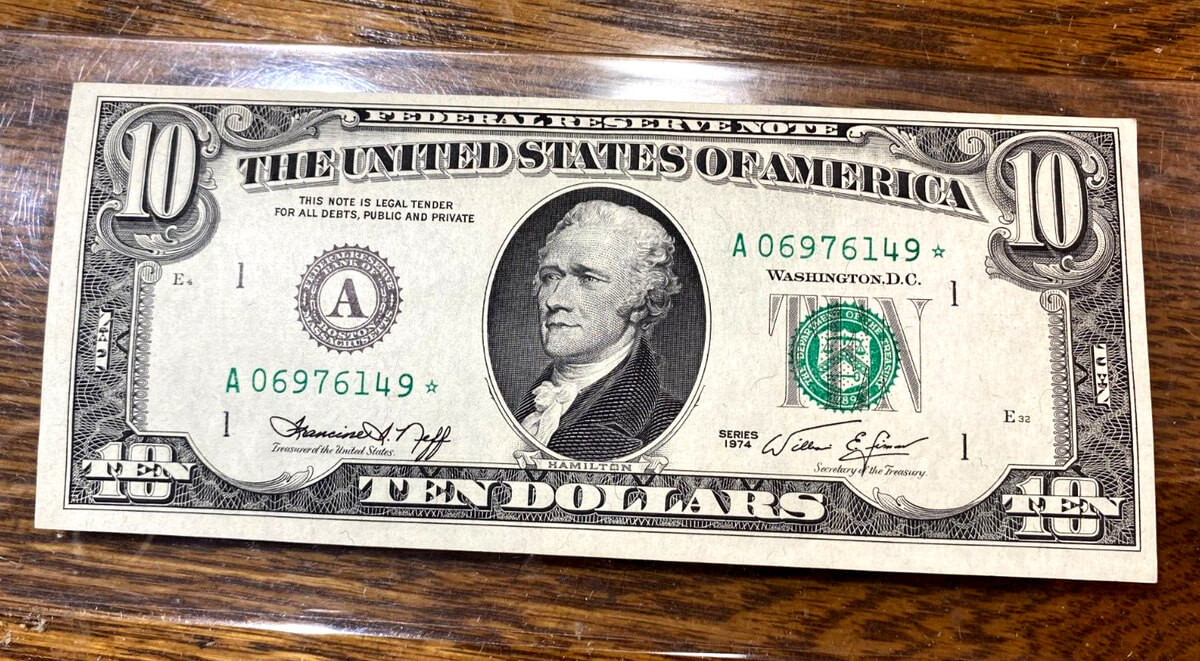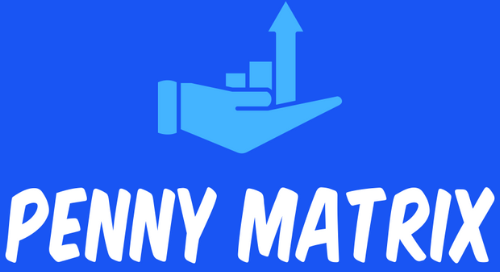When most people think of old money, they imagine rare coins or notes from the 1800s with ornate designs and long-forgotten faces. However, even something as recent as a 1974 10 dollar bill can be of interest to collectors—especially if you know what to look for.
While the majority of these bills are worth only face value, certain factors like condition, serial numbers, and unique markings can push their value much higher.

In this guide, we’ll break down everything you need to know about the 1974 ten dollar bill, including what it’s worth today, what makes some of these bills rare, and how to identify a potentially valuable note.
Quick Overview: 1974 10 Dollar Bill Specs
- Denomination: $10.00 USD
- Type: Federal Reserve Note
- Series: 1974
- Signatures: Neff and Simon
- Federal Reserve Bank Variants: Multiple, including a more valuable issue from Minneapolis
- Special Variants: Star Notes
The Basic Value Of A 1974 Ten Dollar Bill
Let’s start with the basics: most 1974 ten dollar bills are only worth their face value—$10—especially if they have been circulated.
However, collectors will pay more for bills in excellent condition. Here’s a breakdown of typical values:
- Circulated condition: $10 (face value)
- Extremely Fine condition: $12–$15
- Uncirculated condition (MS 63): $30–$35
So, if you come across a crisp, uncirculated 1974 ten dollar bill, you might have a small treasure on your hands. But what’s the deal with MS 63? Let’s dig into that.
Understanding Note Grades: What Makes a Bill Valuable?
Just like coins, paper money is graded based on its **condition**. Here are two key grades to be aware of:
Extremely Fine
- The note has minor signs of circulation, such as small folds or creases.
- Still maintains its **original crispness** and **vivid color**.
- No major stains, tears, or discolorations.
- Typically valued around $12 to $15 for a 1974 $10 bill.
MS 63 (Choice Uncirculated)
- MS stands for “Mint State,” a grading term borrowed from coin collecting.
- The note **has never been in circulation.
- Perfectly centered, crisp, and clean.
- No folds, creases, or blemishes.
- A 1974 $10 bill in MS 63 condition can sell for $30 to $35.
If you suspect you have a note in one of these higher conditions, consider having it professionally graded. A certification from a reputable grading service can add legitimacy and value to your bill.
What Are Star Notes and Why Are They Special?
If there’s one thing collectors love, it’s rarity—and that’s where **star notes** come into play.
What Is a Star Note?
Star notes are replacement bills printed by the U.S. Bureau of Engraving and Printing (BEP) to replace damaged or misprinted bills before release. To identify these, look at the **serial number**—if there’s a **star (*) at the end**, you’ve got a star note.
Why Are They Valuable?
Star notes are printed in much smaller quantities, making them rarer and more collectible. The fewer that were printed from a specific Federal Reserve Bank, the more potential value they hold.
Star Note Values for 1974 $10 Bills:
- Extremely Fine condition $32.50 to $42.50
- MS 63 Uncirculated: $70 to $77.50
In some cases, star notes from specific Federal Reserve Banks (like Minneapolis) may fetch even more if they’re from a **scarce print run**.
Which Federal Reserve Banks Issued These Bills?
Each 1974 $10 bill was issued by one of the 12 regional Federal Reserve Banks, and you can tell which one by the **letter and name** on the seal to the left of the portrait.

Some banks issued more notes than others, which affects the rarity. The **Federal Reserve Bank of Minneapolis (letter I)** is known to have released a **scarcer volume** of 1974 $10 bills. As a result, collectors often seek out these bills, especially in uncirculated or star note formats.
Collectibility Factors: What to Look For
Here are some features that can increase the desirability—and value—of your 1974 $10 bill:
1. Crisp, Uncirculated Condition: As mentioned, uncirculated bills with no folds or creases are far more valuable.
2. Star Notes: Always check for the star at the end of the serial number.
3. Unusual Serial Numbers: Some collectors specialize in “fancy” serial numbers, such as:
- Repeating numbers (e.g., 12341234)
- Low serial numbers (e.g., 00000012)
- Palindromes (e.g., 12344321)
These patterns can significantly boost the bill’s worth.
4. Rare Federal Reserve Bank (e.g., Minneapolis): Bureau statistics show that some banks printed fewer notes, which leads to scarcity.
How to Determine If Your Bill Is Valuable
If you’re unsure whether your 1974 $10 bill is worth more than face value, follow these steps:
- Inspect the serial number: Look for a star or fancy number.
- Examine the condition: Hold the bill under light to spot creases or folds
- Check the Federal Reserve Bank: Minneapolis issues tend to be more sought after.
- Compare with recent sales: Sites like eBay, Heritage Auctions, or currency collecting forums can give insight into real-world prices.
- Consider professional grading: Services like PMG (Paper Money Guaranty) or PCGS Currency can authenticate and grade your note.
Can I still use a 1974 $10 bill as legal tender? Yes, it’s still legal currency in the U.S. and can be spent anywhere—but it might be worth more to a collector!
What does “MS 63” mean again? It refers to a grading scale. MS 63 means the bill is in “Mint State” with no signs of wear—essentially brand new.
Where can I sell my 1974 $10 bill? Online platforms like eBay, Etsy, or auction houses specializing in currency are great options. Always include clear photos and details.
Conclusion
If you’ve found a 1974 $10 bill in a drawer or inherited one in a collection, it’s worth a second look. While most are not particularly rare, high-condition notes, star notes, and rare issues can add surprising value.
Even if your bill is only worth face value today, consider keeping it safe—paper money from this era may become more collectible over time, especially if it remains in excellent shape.
In the world of currency collecting, **knowledge and attention to detail pay off**—sometimes literally!
Pro Tip: Store collectible bills in protective sleeves made from Mylar or other acid-free materials to preserve their condition. Never tape, laminate, or fold collectible currency.
If you’re into paper money collecting or just found a 1974 10 dollar bill and got curious—you’re already on the right track. Whether it’s a star note or just a piece of history, every bill has a story. And sometimes, it’s worth more than you’d expect.

